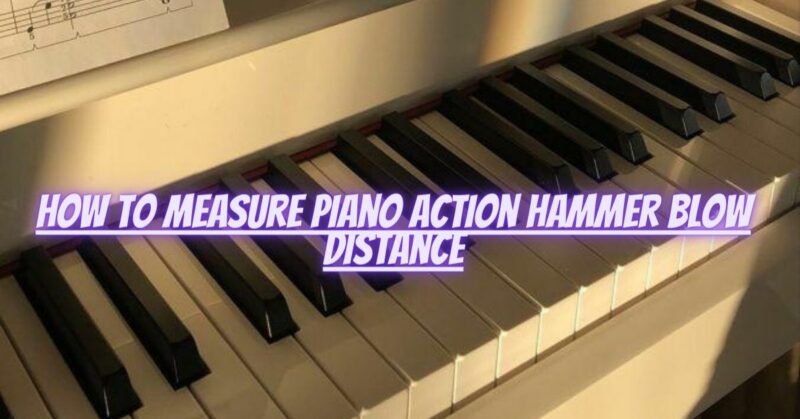Measuring the hammer blow distance in a piano action is an essential part of action regulation. The hammer blow distance refers to the distance the hammer travels from the point of escapement to the string before it strikes the string. Correctly adjusting the hammer blow distance ensures that the hammers are properly aligned and strike the strings with the right force, producing an even and balanced tone across all keys. Here’s a step-by-step guide on how to measure and adjust the hammer blow distance:
Note: Before attempting any adjustments to the piano action, it’s crucial to have a basic understanding of piano mechanics. If you’re not familiar with piano maintenance and regulation, it’s best to seek the assistance of a qualified piano technician.
Tools Needed:
- Hammer blow distance gauge (a specialized tool for measuring the distance).
- Screwdriver set.
- Capstan screwdriver (for some pianos with capstan regulation).
- Key frame cushioning material (if needed).
Step 1: Preparation: Ensure that the piano is on a level surface and that the action is accessible for regulation.
Step 2: Identify the Measurement Point: Locate the measurement point on the action. The measurement point is the place where the hammer rests before it is released to strike the string. This point is generally indicated by a mark or line on the action.
Step 3: Measure the Hammer Blow Distance: Insert the hammer blow distance gauge between the hammer and the string at the measurement point. Gently press the key to release the hammer and observe the distance the hammer travels before hitting the string. The gauge will provide a measurement in millimeters or inches.
Step 4: Compare with Specifications: Refer to the piano manufacturer’s specifications or a piano technician’s guide for the recommended hammer blow distance for your specific piano model. Compare the measured distance with the ideal distance specified.
Step 5: Adjustments: If the measured hammer blow distance deviates from the ideal specification, adjustments may be necessary.
For Short Hammer Blow Distance:
- If your piano has capstan regulation, use a capstan screwdriver to increase the blow distance.
- If your piano has traditional regulation, carefully adjust the hammer flange screws to allow more blow distance.
For Long Hammer Blow Distance:
- If your piano has capstan regulation, use a capstan screwdriver to decrease the blow distance.
- If your piano has traditional regulation, carefully adjust the hammer flange screws to reduce the blow distance.
Step 6: Recheck and Fine-Tuning: After making adjustments, recheck the hammer blow distance with the gauge. Fine-tune the regulation as needed to achieve the desired distance.
Step 7: Test and Evaluate: Play the piano and evaluate the touch and tone across all keys. If the hammers strike the strings with the appropriate force and produce an even tone, the regulation has been successful.
Note: Piano action regulation is a delicate process that requires precision. If you are unsure about making adjustments or encounter any issues, it’s best to seek the assistance of a qualified piano technician. Proper action regulation ensures that your piano performs optimally, enhancing your playing experience and preserving the instrument’s overall health and longevity.


